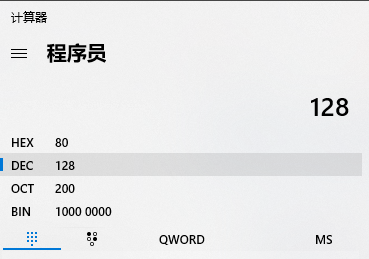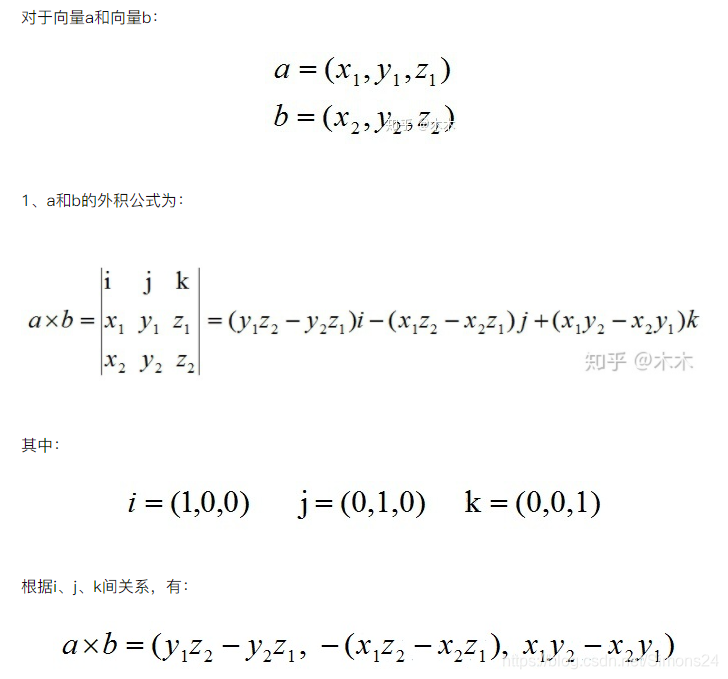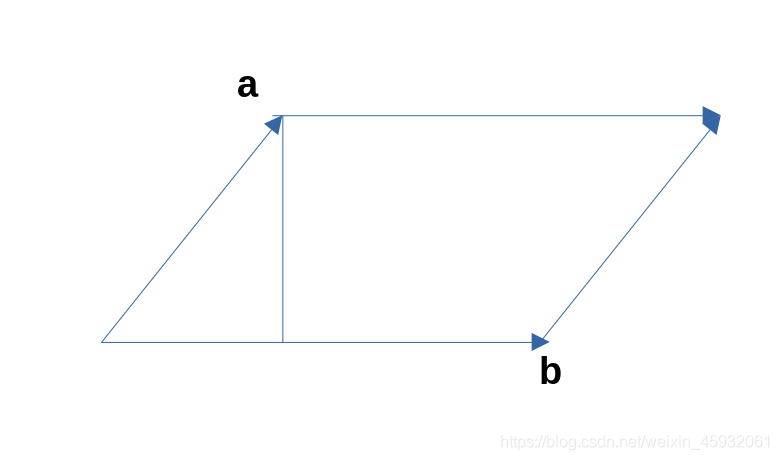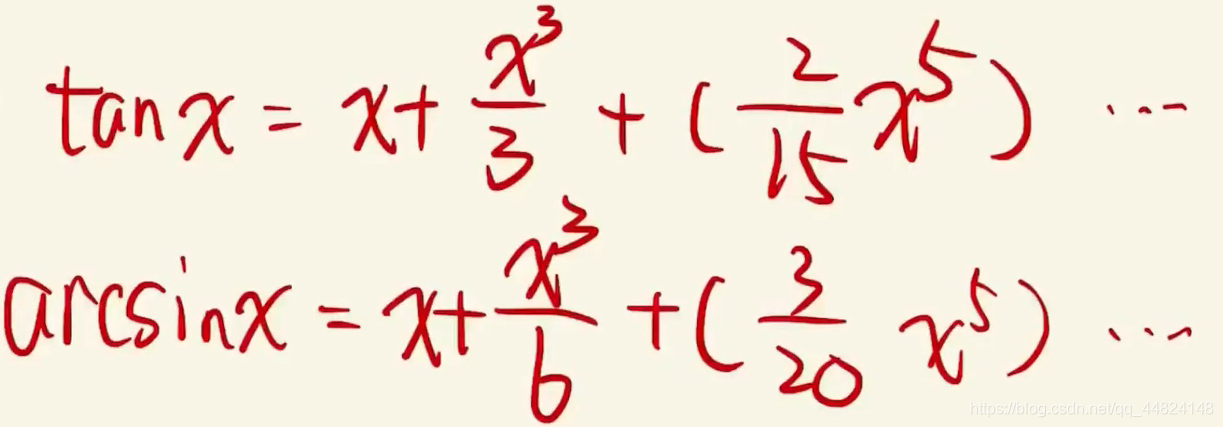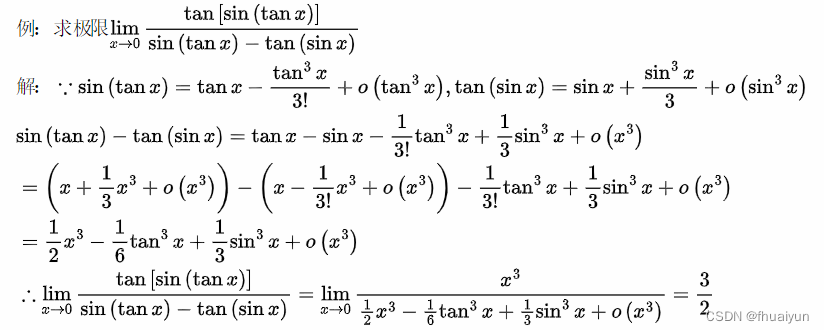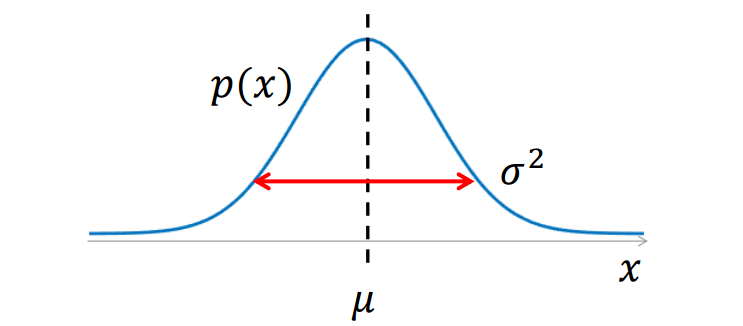
pom
<?xml version="1.0" encoding="UTF-8"?>
<project xmlns="http://maven.apache.org/POM/4.0.0"xmlns:xsi="http://www.w3.org/2001/XMLSchema-instance"xsi:schemaLocation="http://maven.apache.org/POM/4.0.0 http://maven.apache.org/xsd/maven-4.0.0.xsd"><modelVersion>4.0.0</modelVersion><groupId>org.example</groupId><artifactId>SM2test</artifactId><version>1.0-SNAPSHOT</version><dependencies><dependency><groupId>org.bouncycastle</groupId><artifactId>bcprov-jdk15on</artifactId><version>1.56</version></dependency></dependencies></project>Cipher
import java.math.BigInteger;
import org.bouncycastle.crypto.AsymmetricCipherKeyPair;
import org.bouncycastle.crypto.params.ECPrivateKeyParameters;
import org.bouncycastle.crypto.params.ECPublicKeyParameters;
import org.bouncycastle.math.ec.ECPoint;public class Cipher {private int ct;private ECPoint p2;private SM3Digest sm3keybase;private SM3Digest sm3c3;private byte key[];private byte keyOff;public Cipher(){this.ct = 1;this.key = new byte[32];this.keyOff = 0;}private void Reset(){this.sm3keybase = new SM3Digest();this.sm3c3 = new SM3Digest();byte p[] = Util.byteConvert32Bytes(p2.getX().toBigInteger());this.sm3keybase.update(p, 0, p.length);this.sm3c3.update(p, 0, p.length);p = Util.byteConvert32Bytes(p2.getY().toBigInteger());this.sm3keybase.update(p, 0, p.length);this.ct = 1;NextKey();}private void NextKey(){SM3Digest sm3keycur = new SM3Digest(this.sm3keybase);sm3keycur.update((byte) (ct >> 24 & 0xff));sm3keycur.update((byte) (ct >> 16 & 0xff));sm3keycur.update((byte) (ct >> 8 & 0xff));sm3keycur.update((byte) (ct & 0xff));sm3keycur.doFinal(key, 0);this.keyOff = 0;this.ct++;}public ECPoint Init_enc(SM2 sm2, ECPoint userKey){AsymmetricCipherKeyPair key = sm2.ecc_key_pair_generator.generateKeyPair();ECPrivateKeyParameters ecpriv = (ECPrivateKeyParameters) key.getPrivate();ECPublicKeyParameters ecpub = (ECPublicKeyParameters) key.getPublic();BigInteger k = ecpriv.getD();ECPoint c1 = ecpub.getQ();this.p2 = userKey.multiply(k);Reset();return c1;}public void Encrypt(byte data[]){this.sm3c3.update(data, 0, data.length);for (int i = 0; i < data.length; i++){if (keyOff == key.length){NextKey();}data[i] ^= key[keyOff++];}}public void Init_dec(BigInteger userD, ECPoint c1){this.p2 = c1.multiply(userD);Reset();}public void Decrypt(byte data[]){for (int i = 0; i < data.length; i++){if (keyOff == key.length){NextKey();}data[i] ^= key[keyOff++];}this.sm3c3.update(data, 0, data.length);}public void Dofinal(byte c3[]){byte p[] = Util.byteConvert32Bytes(p2.getY().toBigInteger());this.sm3c3.update(p, 0, p.length);this.sm3c3.doFinal(c3, 0);Reset();}
}SM2
import java.math.BigInteger;
import java.security.SecureRandom;import org.bouncycastle.crypto.generators.ECKeyPairGenerator;
import org.bouncycastle.crypto.params.ECDomainParameters;
import org.bouncycastle.crypto.params.ECKeyGenerationParameters;
import org.bouncycastle.math.ec.ECCurve;
import org.bouncycastle.math.ec.ECFieldElement;
import org.bouncycastle.math.ec.ECPoint;
import org.bouncycastle.math.ec.ECFieldElement.Fp;public class SM2 {//正式参数public static String[] ecc_param = {"FFFFFFFEFFFFFFFFFFFFFFFFFFFFFFFFFFFFFFFF00000000FFFFFFFFFFFFFFFF","FFFFFFFEFFFFFFFFFFFFFFFFFFFFFFFFFFFFFFFF00000000FFFFFFFFFFFFFFFC","28E9FA9E9D9F5E344D5A9E4BCF6509A7F39789F515AB8F92DDBCBD414D940E93","FFFFFFFEFFFFFFFFFFFFFFFFFFFFFFFF7203DF6B21C6052B53BBF40939D54123","32C4AE2C1F1981195F9904466A39C9948FE30BBFF2660BE1715A4589334C74C7","BC3736A2F4F6779C59BDCEE36B692153D0A9877CC62A474002DF32E52139F0A0"};public static SM2 Instance() {return new SM2();}public final BigInteger ecc_p;public final BigInteger ecc_a;public final BigInteger ecc_b;public final BigInteger ecc_n;public final BigInteger ecc_gx;public final BigInteger ecc_gy;public final ECCurve ecc_curve;public final ECPoint ecc_point_g;public final ECDomainParameters ecc_bc_spec;public final ECKeyPairGenerator ecc_key_pair_generator;public final ECFieldElement ecc_gx_fieldelement;public final ECFieldElement ecc_gy_fieldelement;public SM2() {this.ecc_p = new BigInteger(ecc_param[0], 16);this.ecc_a = new BigInteger(ecc_param[1], 16);this.ecc_b = new BigInteger(ecc_param[2], 16);this.ecc_n = new BigInteger(ecc_param[3], 16);this.ecc_gx = new BigInteger(ecc_param[4], 16);this.ecc_gy = new BigInteger(ecc_param[5], 16);this.ecc_gx_fieldelement = new Fp(this.ecc_p, this.ecc_gx);this.ecc_gy_fieldelement = new Fp(this.ecc_p, this.ecc_gy);this.ecc_curve = new ECCurve.Fp(this.ecc_p, this.ecc_a, this.ecc_b);this.ecc_point_g = new ECPoint.Fp(this.ecc_curve, this.ecc_gx_fieldelement, this.ecc_gy_fieldelement);this.ecc_bc_spec = new ECDomainParameters(this.ecc_curve, this.ecc_point_g, this.ecc_n);ECKeyGenerationParameters ecc_ecgenparam;ecc_ecgenparam = new ECKeyGenerationParameters(this.ecc_bc_spec, new SecureRandom());this.ecc_key_pair_generator = new ECKeyPairGenerator();this.ecc_key_pair_generator.init(ecc_ecgenparam);}
}SM2KeyPair
public class SM2KeyPair {/** 公钥 */private String publicKey;/** 私钥 */private String privateKey;SM2KeyPair(String publicKey, String privateKey) {this.publicKey = publicKey;this.privateKey = privateKey;}public String getPublicKey() {return publicKey;}public String getPrivateKey() {return privateKey;}}SM2Utils
import java.io.IOException;
import java.math.BigInteger;
import org.bouncycastle.crypto.AsymmetricCipherKeyPair;
import org.bouncycastle.crypto.params.ECPrivateKeyParameters;
import org.bouncycastle.crypto.params.ECPublicKeyParameters;
import org.bouncycastle.math.ec.ECPoint;public class SM2Utils {//生成随机秘钥对public static SM2KeyPair generateKeyPair() {SM2 sm2 = SM2.Instance();AsymmetricCipherKeyPair key = sm2.ecc_key_pair_generator.generateKeyPair();ECPrivateKeyParameters ecpriv = (ECPrivateKeyParameters) key.getPrivate();ECPublicKeyParameters ecpub = (ECPublicKeyParameters) key.getPublic();BigInteger privateKey = ecpriv.getD();ECPoint publicKey = ecpub.getQ();System.out.println("公钥: " + Util.byteToHex(publicKey.getEncoded()));System.out.println("私钥: " + Util.byteToHex(privateKey.toByteArray()));return new SM2KeyPair(Util.byteToHex(publicKey.getEncoded(false)), Util.byteToHex(privateKey.toByteArray()));}//数据加密public static String encrypt(byte[] publicKey, byte[] data) throws IOException {if (publicKey == null || publicKey.length == 0) {return null;}if (data == null || data.length == 0) {return null;}byte[] source = new byte[data.length];System.arraycopy(data, 0, source, 0, data.length);Cipher cipher = new Cipher();SM2 sm2 = SM2.Instance();ECPoint userKey = sm2.ecc_curve.decodePoint(publicKey);ECPoint c1 = cipher.Init_enc(sm2, userKey);cipher.Encrypt(source);byte[] c3 = new byte[32];cipher.Dofinal(c3);// System.out.println("C1 " + Util.byteToHex(c1.getEncoded()));
// System.out.println("C2 " + Util.byteToHex(source));
// System.out.println("C3 " + Util.byteToHex(c3));//C1 C2 C3拼装成加密字串return Util.byteToHex(c1.getEncoded(false)) + Util.byteToHex(source) + Util.byteToHex(c3);}//数据解密public static byte[] decrypt(byte[] privateKey, byte[] encryptedData) throws IOException {if (privateKey == null || privateKey.length == 0) {return null;}if (encryptedData == null || encryptedData.length == 0) {return null;}//加密字节数组转换为十六进制的字符串 长度变为encryptedData.length * 2String data = Util.byteToHex(encryptedData);/***分解加密字串* (C1 = C1标志位2位 + C1实体部分128位 = 130)* (C3 = C3实体部分64位 = 64)* (C2 = encryptedData.length * 2 - C1长度 - C2长度)*/byte[] c1Bytes = Util.hexToByte(data.substring(0, 130));int c2Len = encryptedData.length - 97;byte[] c2 = Util.hexToByte(data.substring(130, 130 + 2 * c2Len));byte[] c3 = Util.hexToByte(data.substring(130 + 2 * c2Len, 194 + 2 * c2Len));SM2 sm2 = SM2.Instance();BigInteger userD = new BigInteger(1, privateKey);//通过C1实体字节来生成ECPointECPoint c1 = sm2.ecc_curve.decodePoint(c1Bytes);Cipher cipher = new Cipher();cipher.Init_dec(userD, c1);cipher.Decrypt(c2);cipher.Dofinal(c3);//返回解密结果return c2;}public static void main(String[] args) throws Exception {//生成密钥对generateKeyPair();String plainText = "lxw测试!@#¥%……&*()";//下面的秘钥可以使用generateKeyPair()生成的秘钥内容// 国密规范正式私钥String prik = "7BF3DC32F3CCA2176CD8EA9267EE06E02E51378E7EA52CCEB42346BE70186804";// 国密规范正式公钥String pubk = "0497077E61FA0168D4EB00F475CAA21629D8BE5377311EAB2BB59D98B00970D0B9571935D8D4DB4DB8C24923FEBC3951088805EBF7989F16694CE57A903D24317B";System.out.println("-------加密: ");String cipherText = SM2Utils.encrypt(Util.hexStringToBytes(pubk), plainText.getBytes());System.out.println(cipherText);System.out.println("-------加密后字符串长度:" + cipherText.length());System.out.println("-------解密: ");byte[] decrypt = SM2Utils.decrypt(Util.hexStringToBytes(prik), Util.hexStringToBytes(cipherText));System.out.println(new String(decrypt));}}SM3
public class SM3 {public static final byte[] iv = { 0x73, (byte) 0x80, 0x16, 0x6f, 0x49,0x14, (byte) 0xb2, (byte) 0xb9, 0x17, 0x24, 0x42, (byte) 0xd7,(byte) 0xda, (byte) 0x8a, 0x06, 0x00, (byte) 0xa9, 0x6f, 0x30,(byte) 0xbc, (byte) 0x16, 0x31, 0x38, (byte) 0xaa, (byte) 0xe3,(byte) 0x8d, (byte) 0xee, 0x4d, (byte) 0xb0, (byte) 0xfb, 0x0e,0x4e };public static int[] Tj = new int[64];static{for (int i = 0; i < 16; i++){Tj[i] = 0x79cc4519;}for (int i = 16; i < 64; i++){Tj[i] = 0x7a879d8a;}}public static byte[] CF(byte[] V, byte[] B){int[] v, b;v = convert(V);b = convert(B);return convert(CF(v, b));}private static int[] convert(byte[] arr){int[] out = new int[arr.length / 4];byte[] tmp = new byte[4];for (int i = 0; i < arr.length; i += 4){System.arraycopy(arr, i, tmp, 0, 4);out[i / 4] = bigEndianByteToInt(tmp);}return out;}private static byte[] convert(int[] arr){byte[] out = new byte[arr.length * 4];byte[] tmp = null;for (int i = 0; i < arr.length; i++){tmp = bigEndianIntToByte(arr[i]);System.arraycopy(tmp, 0, out, i * 4, 4);}return out;}public static int[] CF(int[] V, int[] B){int a, b, c, d, e, f, g, h;int ss1, ss2, tt1, tt2;a = V[0];b = V[1];c = V[2];d = V[3];e = V[4];f = V[5];g = V[6];h = V[7];int[][] arr = expand(B);int[] w = arr[0];int[] w1 = arr[1];for (int j = 0; j < 64; j++){ss1 = (bitCycleLeft(a, 12) + e + bitCycleLeft(Tj[j], j));ss1 = bitCycleLeft(ss1, 7);ss2 = ss1 ^ bitCycleLeft(a, 12);tt1 = FFj(a, b, c, j) + d + ss2 + w1[j];tt2 = GGj(e, f, g, j) + h + ss1 + w[j];d = c;c = bitCycleLeft(b, 9);b = a;a = tt1;h = g;g = bitCycleLeft(f, 19);f = e;e = P0(tt2);/*System.out.print(j+" ");System.out.print(Integer.toHexString(a)+" ");System.out.print(Integer.toHexString(b)+" ");System.out.print(Integer.toHexString(c)+" ");System.out.print(Integer.toHexString(d)+" ");System.out.print(Integer.toHexString(e)+" ");System.out.print(Integer.toHexString(f)+" ");System.out.print(Integer.toHexString(g)+" ");System.out.print(Integer.toHexString(h)+" ");System.out.println("");*/}
// System.out.println("");int[] out = new int[8];out[0] = a ^ V[0];out[1] = b ^ V[1];out[2] = c ^ V[2];out[3] = d ^ V[3];out[4] = e ^ V[4];out[5] = f ^ V[5];out[6] = g ^ V[6];out[7] = h ^ V[7];return out;}private static int[][] expand(int[] B){int W[] = new int[68];int W1[] = new int[64];for (int i = 0; i < B.length; i++){W[i] = B[i];}for (int i = 16; i < 68; i++){W[i] = P1(W[i - 16] ^ W[i - 9] ^ bitCycleLeft(W[i - 3], 15))^ bitCycleLeft(W[i - 13], 7) ^ W[i - 6];}for (int i = 0; i < 64; i++){W1[i] = W[i] ^ W[i + 4];}int arr[][] = new int[][] { W, W1 };return arr;}private static byte[] bigEndianIntToByte(int num){return back(Util.intToBytes(num));}private static int bigEndianByteToInt(byte[] bytes){return Util.byteToInt(back(bytes));}private static int FFj(int X, int Y, int Z, int j){if (j >= 0 && j <= 15){return FF1j(X, Y, Z);}else{return FF2j(X, Y, Z);}}private static int GGj(int X, int Y, int Z, int j){if (j >= 0 && j <= 15){return GG1j(X, Y, Z);}else{return GG2j(X, Y, Z);}}// 逻辑位运算函数private static int FF1j(int X, int Y, int Z){int tmp = X ^ Y ^ Z;return tmp;}private static int FF2j(int X, int Y, int Z){int tmp = ((X & Y) | (X & Z) | (Y & Z));return tmp;}private static int GG1j(int X, int Y, int Z){int tmp = X ^ Y ^ Z;return tmp;}private static int GG2j(int X, int Y, int Z){int tmp = (X & Y) | (~X & Z);return tmp;}private static int P0(int X){int y = rotateLeft(X, 9);y = bitCycleLeft(X, 9);int z = rotateLeft(X, 17);z = bitCycleLeft(X, 17);int t = X ^ y ^ z;return t;}private static int P1(int X){int t = X ^ bitCycleLeft(X, 15) ^ bitCycleLeft(X, 23);return t;}/*** 对最后一个分组字节数据padding** @param in* @param bLen* 分组个数* @return*/public static byte[] padding(byte[] in, int bLen){int k = 448 - (8 * in.length + 1) % 512;if (k < 0){k = 960 - (8 * in.length + 1) % 512;}k += 1;byte[] padd = new byte[k / 8];padd[0] = (byte) 0x80;long n = in.length * 8 + bLen * 512;byte[] out = new byte[in.length + k / 8 + 64 / 8];int pos = 0;System.arraycopy(in, 0, out, 0, in.length);pos += in.length;System.arraycopy(padd, 0, out, pos, padd.length);pos += padd.length;byte[] tmp = back(Util.longToBytes(n));System.arraycopy(tmp, 0, out, pos, tmp.length);return out;}/*** 字节数组逆序** @param in* @return*/private static byte[] back(byte[] in){byte[] out = new byte[in.length];for (int i = 0; i < out.length; i++){out[i] = in[out.length - i - 1];}return out;}public static int rotateLeft(int x, int n){return (x << n) | (x >> (32 - n));}private static int bitCycleLeft(int n, int bitLen){bitLen %= 32;byte[] tmp = bigEndianIntToByte(n);int byteLen = bitLen / 8;int len = bitLen % 8;if (byteLen > 0){tmp = byteCycleLeft(tmp, byteLen);}if (len > 0){tmp = bitSmall8CycleLeft(tmp, len);}return bigEndianByteToInt(tmp);}private static byte[] bitSmall8CycleLeft(byte[] in, int len){byte[] tmp = new byte[in.length];int t1, t2, t3;for (int i = 0; i < tmp.length; i++){t1 = (byte) ((in[i] & 0x000000ff) << len);t2 = (byte) ((in[(i + 1) % tmp.length] & 0x000000ff) >> (8 - len));t3 = (byte) (t1 | t2);tmp[i] = (byte) t3;}return tmp;}private static byte[] byteCycleLeft(byte[] in, int byteLen){byte[] tmp = new byte[in.length];System.arraycopy(in, byteLen, tmp, 0, in.length - byteLen);System.arraycopy(in, 0, tmp, in.length - byteLen, byteLen);return tmp;}
}SM3Digest
import org.bouncycastle.util.encoders.Hex;public class SM3Digest {/** SM3值的长度 */private static final int BYTE_LENGTH = 32;/** SM3分组长度 */private static final int BLOCK_LENGTH = 64;/** 缓冲区长度 */private static final int BUFFER_LENGTH = BLOCK_LENGTH * 1;/** 缓冲区 */private byte[] xBuf = new byte[BUFFER_LENGTH];/** 缓冲区偏移量 */private int xBufOff;/** 初始向量 */private byte[] V = SM3.iv.clone();private int cntBlock = 0;public SM3Digest() {}public SM3Digest(SM3Digest t){System.arraycopy(t.xBuf, 0, this.xBuf, 0, t.xBuf.length);this.xBufOff = t.xBufOff;System.arraycopy(t.V, 0, this.V, 0, t.V.length);}/*** SM3结果输出** @param out 保存SM3结构的缓冲区* @param outOff 缓冲区偏移量* @return*/public int doFinal(byte[] out, int outOff){byte[] tmp = doFinal();System.arraycopy(tmp, 0, out, 0, tmp.length);return BYTE_LENGTH;}public void reset(){xBufOff = 0;cntBlock = 0;V = SM3.iv.clone();}/*** 明文输入** @param in* 明文输入缓冲区* @param inOff* 缓冲区偏移量* @param len* 明文长度*/public void update(byte[] in, int inOff, int len){int partLen = BUFFER_LENGTH - xBufOff;int inputLen = len;int dPos = inOff;if (partLen < inputLen){System.arraycopy(in, dPos, xBuf, xBufOff, partLen);inputLen -= partLen;dPos += partLen;doUpdate();while (inputLen > BUFFER_LENGTH){System.arraycopy(in, dPos, xBuf, 0, BUFFER_LENGTH);inputLen -= BUFFER_LENGTH;dPos += BUFFER_LENGTH;doUpdate();}}System.arraycopy(in, dPos, xBuf, xBufOff, inputLen);xBufOff += inputLen;}private void doUpdate(){byte[] B = new byte[BLOCK_LENGTH];for (int i = 0; i < BUFFER_LENGTH; i += BLOCK_LENGTH){System.arraycopy(xBuf, i, B, 0, B.length);doHash(B);}xBufOff = 0;}private void doHash(byte[] B){byte[] tmp = SM3.CF(V, B);System.arraycopy(tmp, 0, V, 0, V.length);cntBlock++;}private byte[] doFinal(){byte[] B = new byte[BLOCK_LENGTH];byte[] buffer = new byte[xBufOff];System.arraycopy(xBuf, 0, buffer, 0, buffer.length);byte[] tmp = SM3.padding(buffer, cntBlock);for (int i = 0; i < tmp.length; i += BLOCK_LENGTH){System.arraycopy(tmp, i, B, 0, B.length);doHash(B);}return V;}public void update(byte in){byte[] buffer = new byte[] { in };update(buffer, 0, 1);}public int getDigestSize(){return BYTE_LENGTH;}public static void main(String[] args){byte[] md = new byte[32];byte[] msg1 = "lxw 测试".getBytes();SM3Digest sm3 = new SM3Digest();sm3.update(msg1, 0, msg1.length);sm3.doFinal(md, 0);String s = new String(Hex.encode(md));System.out.println(s.toUpperCase());}
}Util
import java.math.BigInteger;public class Util {/*** 整形转换成网络传输的字节流(字节数组)型数据** @param num 一个整型数据* @return 4个字节的自己数组*/public static byte[] intToBytes(int num){byte[] bytes = new byte[4];bytes[0] = (byte) (0xff & (num >> 0));bytes[1] = (byte) (0xff & (num >> 8));bytes[2] = (byte) (0xff & (num >> 16));bytes[3] = (byte) (0xff & (num >> 24));return bytes;}/*** 四个字节的字节数据转换成一个整形数据** @param bytes 4个字节的字节数组* @return 一个整型数据*/public static int byteToInt(byte[] bytes){int num = 0;int temp;temp = (0x000000ff & (bytes[0])) << 0;num = num | temp;temp = (0x000000ff & (bytes[1])) << 8;num = num | temp;temp = (0x000000ff & (bytes[2])) << 16;num = num | temp;temp = (0x000000ff & (bytes[3])) << 24;num = num | temp;return num;}/*** 长整形转换成网络传输的字节流(字节数组)型数据** @param num 一个长整型数据* @return 4个字节的自己数组*/public static byte[] longToBytes(long num){byte[] bytes = new byte[8];for (int i = 0; i < 8; i++){bytes[i] = (byte) (0xff & (num >> (i * 8)));}return bytes;}/*** 大数字转换字节流(字节数组)型数据** @param n* @return*/public static byte[] byteConvert32Bytes(BigInteger n){byte tmpd[] = (byte[])null;if(n == null){return null;}if(n.toByteArray().length == 33){tmpd = new byte[32];System.arraycopy(n.toByteArray(), 1, tmpd, 0, 32);}else if(n.toByteArray().length == 32){tmpd = n.toByteArray();}else{tmpd = new byte[32];for(int i = 0; i < 32 - n.toByteArray().length; i++){tmpd[i] = 0;}System.arraycopy(n.toByteArray(), 0, tmpd, 32 - n.toByteArray().length, n.toByteArray().length);}return tmpd;}/*** 换字节流(字节数组)型数据转大数字** @param b* @return*/public static BigInteger byteConvertInteger(byte[] b){if (b[0] < 0){byte[] temp = new byte[b.length + 1];temp[0] = 0;System.arraycopy(b, 0, temp, 1, b.length);return new BigInteger(temp);}return new BigInteger(b);}/*** 根据字节数组获得值(十六进制数字)** @param bytes* @return*/public static String getHexString(byte[] bytes){return getHexString(bytes, true);}/*** 根据字节数组获得值(十六进制数字)** @param bytes* @param upperCase* @return*/public static String getHexString(byte[] bytes, boolean upperCase){String ret = "";for (int i = 0; i < bytes.length; i++){ret += Integer.toString((bytes[i] & 0xff) + 0x100, 16).substring(1);}return upperCase ? ret.toUpperCase() : ret;}/*** 打印十六进制字符串** @param bytes*/public static void printHexString(byte[] bytes){for (int i = 0; i < bytes.length; i++){String hex = Integer.toHexString(bytes[i] & 0xFF);if (hex.length() == 1){hex = '0' + hex;}System.out.print("0x" + hex.toUpperCase() + ",");}System.out.println("");}/*** Convert hex string to byte[]** @param hexString* the hex string* @return byte[]*/public static byte[] hexStringToBytes(String hexString){if (hexString == null || hexString.equals("")){return null;}hexString = hexString.toUpperCase();int length = hexString.length() / 2;char[] hexChars = hexString.toCharArray();byte[] d = new byte[length];for (int i = 0; i < length; i++){int pos = i * 2;d[i] = (byte) (charToByte(hexChars[pos]) << 4 | charToByte(hexChars[pos + 1]));}return d;}/*** Convert char to byte** @param c* char* @return byte*/public static byte charToByte(char c){return (byte) "0123456789ABCDEF".indexOf(c);}/*** 用于建立十六进制字符的输出的小写字符数组*/private static final char[] DIGITS_LOWER = {'0', '1', '2', '3', '4', '5','6', '7', '8', '9', 'a', 'b', 'c', 'd', 'e', 'f'};/*** 用于建立十六进制字符的输出的大写字符数组*/private static final char[] DIGITS_UPPER = {'0', '1', '2', '3', '4', '5','6', '7', '8', '9', 'A', 'B', 'C', 'D', 'E', 'F'};/*** 将字节数组转换为十六进制字符数组** @param data byte[]* @return 十六进制char[]*/public static char[] encodeHex(byte[] data) {return encodeHex(data, true);}/*** 将字节数组转换为十六进制字符数组** @param data byte[]* @param toLowerCase <code>true</code> 传换成小写格式 , <code>false</code> 传换成大写格式* @return 十六进制char[]*/public static char[] encodeHex(byte[] data, boolean toLowerCase) {return encodeHex(data, toLowerCase ? DIGITS_LOWER : DIGITS_UPPER);}/*** 将字节数组转换为十六进制字符数组** @param data byte[]* @param toDigits 用于控制输出的char[]* @return 十六进制char[]*/protected static char[] encodeHex(byte[] data, char[] toDigits) {int l = data.length;char[] out = new char[l << 1];// two characters form the hex value.for (int i = 0, j = 0; i < l; i++) {out[j++] = toDigits[(0xF0 & data[i]) >>> 4];out[j++] = toDigits[0x0F & data[i]];}return out;}/*** 将字节数组转换为十六进制字符串** @param data byte[]* @return 十六进制String*/public static String encodeHexString(byte[] data) {return encodeHexString(data, true);}/*** 将字节数组转换为十六进制字符串** @param data byte[]* @param toLowerCase <code>true</code> 传换成小写格式 , <code>false</code> 传换成大写格式* @return 十六进制String*/public static String encodeHexString(byte[] data, boolean toLowerCase) {return encodeHexString(data, toLowerCase ? DIGITS_LOWER : DIGITS_UPPER);}/*** 将字节数组转换为十六进制字符串** @param data byte[]* @param toDigits 用于控制输出的char[]* @return 十六进制String*/protected static String encodeHexString(byte[] data, char[] toDigits) {return new String(encodeHex(data, toDigits));}/*** 将十六进制字符数组转换为字节数组** @param data 十六进制char[]* @return byte[]* @throws RuntimeException 如果源十六进制字符数组是一个奇怪的长度,将抛出运行时异常*/public static byte[] decodeHex(char[] data) {int len = data.length;if ((len & 0x01) != 0) {throw new RuntimeException("Odd number of characters.");}byte[] out = new byte[len >> 1];// two characters form the hex value.for (int i = 0, j = 0; j < len; i++) {int f = toDigit(data[j], j) << 4;j++;f = f | toDigit(data[j], j);j++;out[i] = (byte) (f & 0xFF);}return out;}/*** 将十六进制字符转换成一个整数** @param ch 十六进制char* @param index 十六进制字符在字符数组中的位置* @return 一个整数* @throws RuntimeException 当ch不是一个合法的十六进制字符时,抛出运行时异常*/protected static int toDigit(char ch, int index) {int digit = Character.digit(ch, 16);if (digit == -1) {throw new RuntimeException("Illegal hexadecimal character " + ch+ " at index " + index);}return digit;}/*** 数字字符串转ASCII码字符串** @param content* 字符串* @return ASCII字符串*/public static String StringToAsciiString(String content) {String result = "";int max = content.length();for (int i = 0; i < max; i++) {char c = content.charAt(i);String b = Integer.toHexString(c);result = result + b;}return result;}/*** 十六进制转字符串** @param hexString* 十六进制字符串* @param encodeType* 编码类型4:Unicode,2:普通编码* @return 字符串*/public static String hexStringToString(String hexString, int encodeType) {String result = "";int max = hexString.length() / encodeType;for (int i = 0; i < max; i++) {char c = (char) hexStringToAlgorism(hexString.substring(i * encodeType, (i + 1) * encodeType));result += c;}return result;}/*** 十六进制字符串装十进制** @param hex* 十六进制字符串* @return 十进制数值*/public static int hexStringToAlgorism(String hex) {hex = hex.toUpperCase();int max = hex.length();int result = 0;for (int i = max; i > 0; i--) {char c = hex.charAt(i - 1);int algorism = 0;if (c >= '0' && c <= '9') {algorism = c - '0';} else {algorism = c - 55;}result += Math.pow(16, max - i) * algorism;}return result;}/*** 十六转二进制** @param hex* 十六进制字符串* @return 二进制字符串*/public static String hexStringToBinary(String hex) {hex = hex.toUpperCase();String result = "";int max = hex.length();for (int i = 0; i < max; i++) {char c = hex.charAt(i);switch (c) {case '0':result += "0000";break;case '1':result += "0001";break;case '2':result += "0010";break;case '3':result += "0011";break;case '4':result += "0100";break;case '5':result += "0101";break;case '6':result += "0110";break;case '7':result += "0111";break;case '8':result += "1000";break;case '9':result += "1001";break;case 'A':result += "1010";break;case 'B':result += "1011";break;case 'C':result += "1100";break;case 'D':result += "1101";break;case 'E':result += "1110";break;case 'F':result += "1111";break;}}return result;}/*** ASCII码字符串转数字字符串** @param content* ASCII字符串* @return 字符串*/public static String AsciiStringToString(String content) {String result = "";int length = content.length() / 2;for (int i = 0; i < length; i++) {String c = content.substring(i * 2, i * 2 + 2);int a = hexStringToAlgorism(c);char b = (char) a;String d = String.valueOf(b);result += d;}return result;}/*** 将十进制转换为指定长度的十六进制字符串** @param algorism* int 十进制数字* @param maxLength* int 转换后的十六进制字符串长度* @return String 转换后的十六进制字符串*/public static String algorismToHexString(int algorism, int maxLength) {String result = "";result = Integer.toHexString(algorism);if (result.length() % 2 == 1) {result = "0" + result;}return patchHexString(result.toUpperCase(), maxLength);}/*** 字节数组转为普通字符串(ASCII对应的字符)** @param bytearray* byte[]* @return String*/public static String byteToString(byte[] bytearray) {String result = "";char temp;int length = bytearray.length;for (int i = 0; i < length; i++) {temp = (char) bytearray[i];result += temp;}return result;}/*** 二进制字符串转十进制** @param binary* 二进制字符串* @return 十进制数值*/public static int binaryToAlgorism(String binary) {int max = binary.length();int result = 0;for (int i = max; i > 0; i--) {char c = binary.charAt(i - 1);int algorism = c - '0';result += Math.pow(2, max - i) * algorism;}return result;}/*** 十进制转换为十六进制字符串** @param algorism* int 十进制的数字* @return String 对应的十六进制字符串*/public static String algorismToHEXString(int algorism) {String result = "";result = Integer.toHexString(algorism);if (result.length() % 2 == 1) {result = "0" + result;}result = result.toUpperCase();return result;}/*** HEX字符串前补0,主要用于长度位数不足。** @param str* String 需要补充长度的十六进制字符串* @param maxLength* int 补充后十六进制字符串的长度* @return 补充结果*/static public String patchHexString(String str, int maxLength) {String temp = "";for (int i = 0; i < maxLength - str.length(); i++) {temp = "0" + temp;}str = (temp + str).substring(0, maxLength);return str;}/*** 将一个字符串转换为int** @param s* String 要转换的字符串* @param defaultInt* int 如果出现异常,默认返回的数字* @param radix* int 要转换的字符串是什么进制的,如16 8 10.* @return int 转换后的数字*/public static int parseToInt(String s, int defaultInt, int radix) {int i = 0;try {i = Integer.parseInt(s, radix);} catch (NumberFormatException ex) {i = defaultInt;}return i;}/*** 将一个十进制形式的数字字符串转换为int** @param s* String 要转换的字符串* @param defaultInt* int 如果出现异常,默认返回的数字* @return int 转换后的数字*/public static int parseToInt(String s, int defaultInt) {int i = 0;try {i = Integer.parseInt(s);} catch (NumberFormatException ex) {i = defaultInt;}return i;}/*** 十六进制串转化为byte数组** @return the array of byte*/public static byte[] hexToByte(String hex)throws IllegalArgumentException {if (hex.length() % 2 != 0) {throw new IllegalArgumentException();}char[] arr = hex.toCharArray();byte[] b = new byte[hex.length() / 2];for (int i = 0, j = 0, l = hex.length(); i < l; i++, j++) {String swap = "" + arr[i++] + arr[i];int byteint = Integer.parseInt(swap, 16) & 0xFF;b[j] = new Integer(byteint).byteValue();}return b;}/*** 字节数组转换为十六进制字符串** @param b* byte[] 需要转换的字节数组* @return String 十六进制字符串*/public static String byteToHex(byte b[]) {if (b == null) {throw new IllegalArgumentException("Argument b ( byte array ) is null! ");}String hs = "";String stmp = "";for (int n = 0; n < b.length; n++) {stmp = Integer.toHexString(b[n] & 0xff);if (stmp.length() == 1) {hs = hs + "0" + stmp;} else {hs = hs + stmp;}}return hs.toUpperCase();}public static byte[] subByte(byte[] input, int startIndex, int length) {byte[] bt = new byte[length];for (int i = 0; i < length; i++) {bt[i] = input[i + startIndex];}return bt;}
}附件下载



